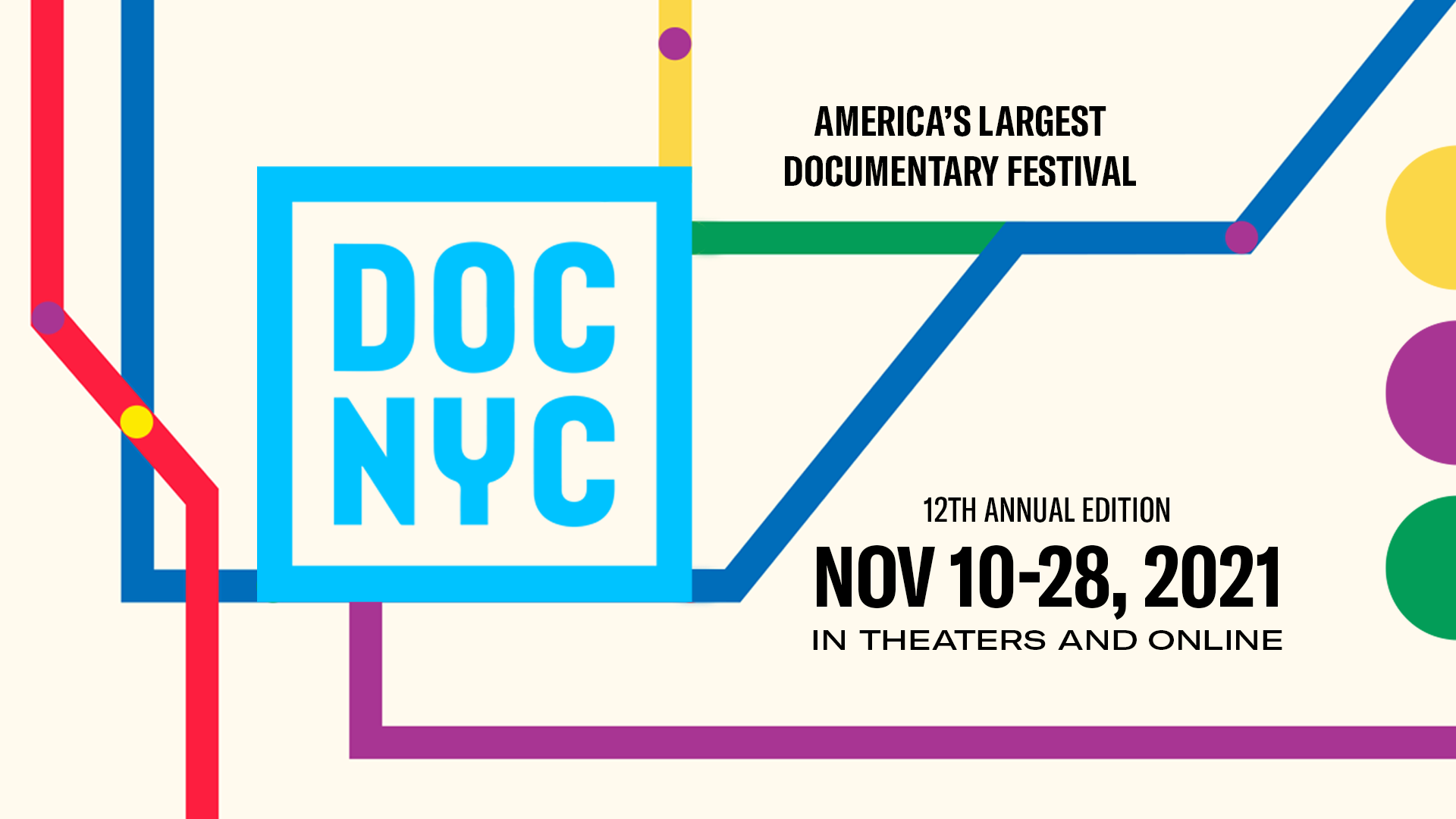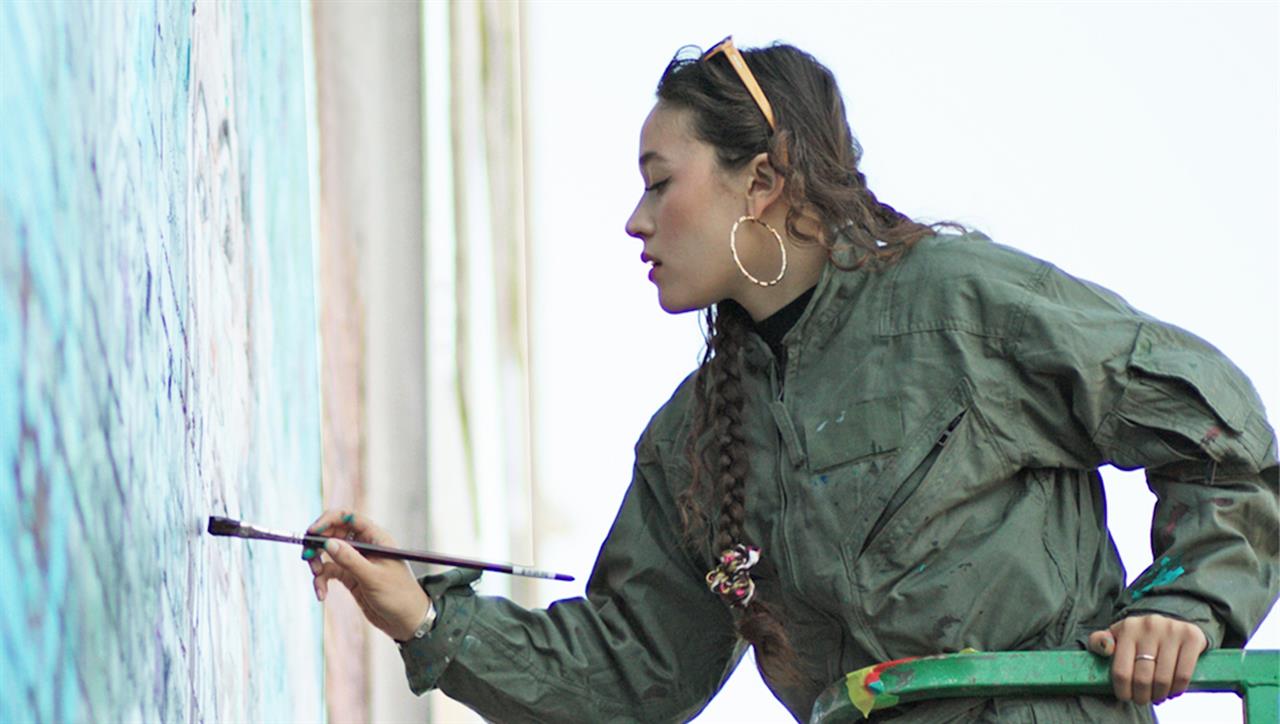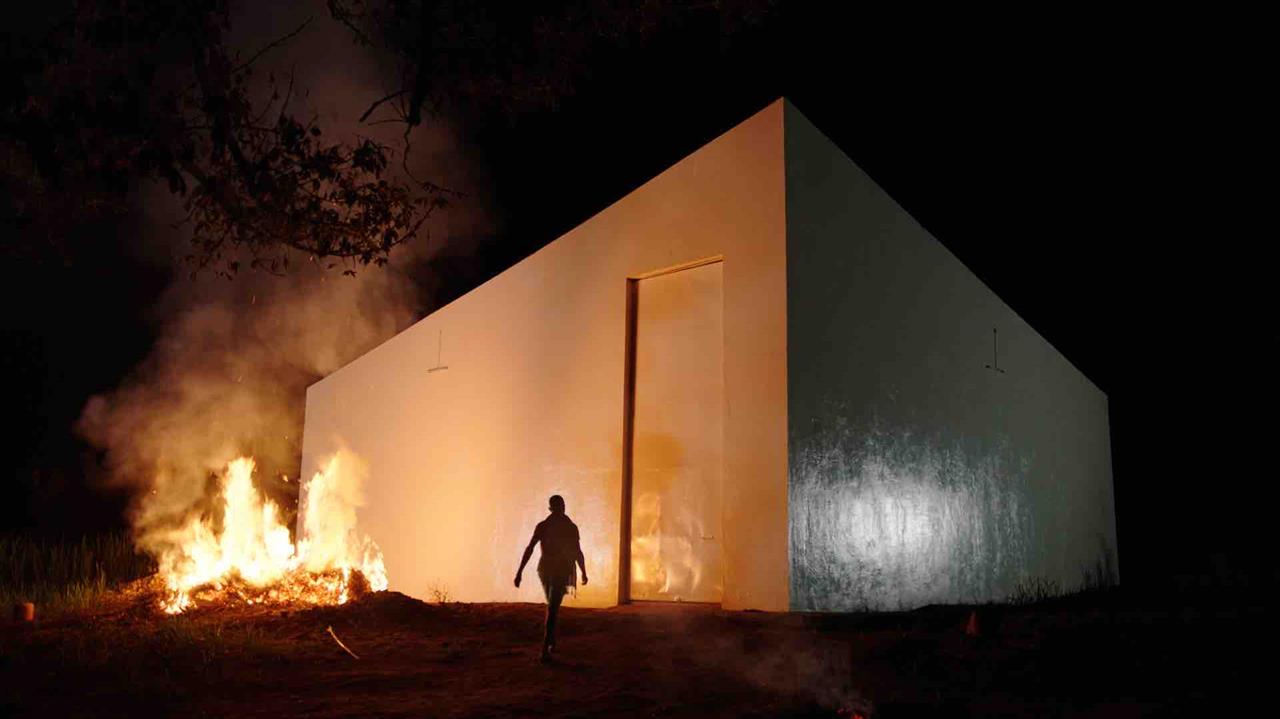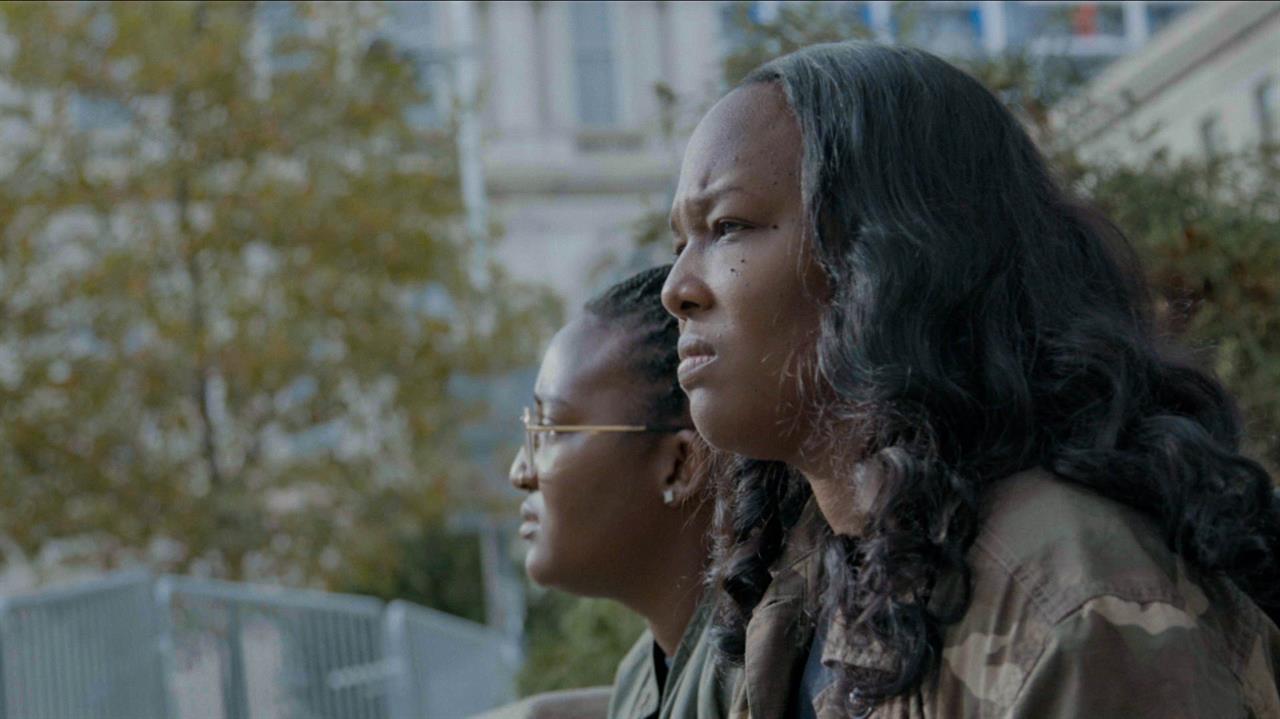|
|
||
|
Pro Tools
FILMFESTIVALS | 24/7 world wide coverageWelcome ! Enjoy the best of both worlds: Film & Festival News, exploring the best of the film festivals community. Launched in 1995, relentlessly connecting films to festivals, documenting and promoting festivals worldwide. Working on an upgrade soon. For collaboration, editorial contributions, or publicity, please send us an email here. User login |
New York DOC NYC 2021
Despite this year’s pandemic interruptions, the declining number of Oscar submitted documentaries, and the need to adjust to new hybrid festival formats, the 2021 edition of the largest American documentary festival DOC NYC (DOC 21), held from November 10 – 18 with an online extension through November 28 had a successful run. Compared to 2020, with an online audience of 38,000 there was a decline in 2021 to 31,000, a dip due to more limited online access to productions and discussions. Still, DOC 21 paralleled the experience of other major hybrid documentary festivals this year operating under more favorable circumstances like Canada’s Hot Docs and the German Leipzig DOK with close to 40,000 in person and online participants. Most hybrid film festivals were drawing larger audiences and more sponsors. Thus documentaries, their doc-fiction variations, and the markets they serve are in a good shape as evidenced by more major streaming services attending these festivals and becoming part of the program. DOC 21 placed more than 250 features and shorts in its first hybrid festival program, supplemented by numerous panels, professional encounters, and special screening events. The program included 130 feature length documentaries with 32 world and 24 US premieres with most films available online in the US. Fourteen of the features could be accessed in weeklong press screenings before the festival. DOC 21 added three new competitive feature sections. The International Composition, the Kaleidoscope Competition for formally innovative productions, and the US Competition for new nonfiction films. The new sections presented 31 productions including 14 world premieres with the remainder shown for the first time in the USA or New York City. Retained from prior DOC editions were the Metropolis Competition with New York stories, the Winners Circle presenting the best international documentary award winners, Luminaries about documentary directors legends, Fight the Powers, Focus on Journalists, Sonic Cinema, Profiles of Singular Individuals, Art + Design, Photography & Film, Personal Journey’s tales of growing up, Sports, Voices of Canada showcasing four features and 9 shorts, the Shorts Program with 70 shorts in 12 thematic selections, and 37 productions selected from seven New York City based colleges teaching documentary film making. DOC NYC is produced by the IFC Center, a division of AMC Networks . The major and supportive sponsors in 2021 were A&E, Apple Original Films, Netflix, Warner media discovery+, National Geographic Films, and ShowTime. Additional support was received from Amazon, Bloomberg, NBC, Sony, XTR, public agencies, and more than 20 DOC 21 event sponsors. Among the media Partners were New York Magazine, WNET, The New Republic and WNYC. For this DOC 21 review three production were selected because of their innovative thematic orientation, audience illumination through empirically based case studies and interviews covering viewers’ knowledge gaps prompting their reflection.
As an Economist article headlined recently, the art market today is driven again by “Monet, Manet, Money” because the biggest galleries, Sotheby’s and Christie’s generated during the first two November weeks this year $2.3 billion and expect to return in 2021 to their 2019 revenues of $4.8 and $5.8 respectively, a goal Sotheby's reached with $7.3 billion already in December. This achievement is facilitated by the merging profit interests of the largest mega art dealers like Hauser and Wirth, Pace, Zwirner, and Gagosian with the dominant auction houses prompting close cooperation. To a lesser extent, the biggest art museums which presumably shape art trends and serve the public are part of the mega gallery and auction hous constallation. They have also been expanding their facilities depending on private and corporate donations driven by the economic and tax interests of donors sellng also their names but not necessarily by art considerations. Against this background, THE ART OF MAKING IT, directed by Kelcey Edwards, and co-produced by Debi Wisch, Allison Berg and Susan Norget provides reflections about the contemporary economic art system and its class specific social characteristics through interviews with young aspiring artist, dealers and gallery managers, art officials and art educators. The reasons why most aspiring and would-be artist will never make a living from their work and why only a few succeed become apparent. Adding to the problem of the elusive art market are empirical studies not discussed in the film. Two years ago, before the pandemic set in UBS/Art Basel noted that the only two segments of the art market which are expanding are buyers from the topmost 1-2 % income groups on one hand and the bottom part of the market with low purchase costs. Some of the most successful art shows, like The Affordable Art Fair now held in 13 global locations, limit the cost of each art work to $10,000 and generated more than $500 million worldwide two years ago. UBS/Art Basel also reported recently that half of 700 surveyed dealers expected sales decline during the first half of 2021, a finding close to the research by the ADAA among its members. By the mid-2021 79% reported an earning loss. These midlevel dealers and gallerists survived with government grants. The systematic constraints of the art economic system prevent innovative artists from breaking through, specifically if they do not fit the system. This disjuncture arisers from not knowing the art market or self-marketing, lacking the social skills to mix with prospective upper middle class buyers and gallery professionals, or having no knowledge of or funds for the expanding NFT and crypto art market segments. Further, there is the disadvantage of lacking proper academic credentials like a Master of Fine Arts from Yale, presumably held by 20% of the artists which show in New York galleries. Like film and law schools, expensive Master of Fine Arts programs have been rapidly expanding. As relayed by a former Yale student, he was ejected from Yale be because he did not meet the staff criteria for his work defined as not being marketable. Thus, his work will never enter the blue chip art world. Ironically, a graduate from the MFA program at Hunter College was not challenged by these constraints. Self-marketing herself via Instagram was successful. Yale benefits from charging an outrageous tuition and like other upscale law and film schools impoverishes students in that process. But what is also clear from comments by one of their instructors, students have been admitted who should not be there. In his words 98% of his students have no artistic talents and will never become artists. Despite the insights THE ART OF MAKING IT provides and the introduction of some small innovate galleries and daring artist, the art eco system deciphered presents few openings for young artists except for few opportunities with limited funding from public and private donors. The art system of the gallery and auction markets leaves little space for innovative American artists. The social distance between the outside artists and the inside cliques running the art system grows steadily. Whenever there are new art tendencies ranging from raw and outsider art to electronically mediated crypto art the biggest galleries and auction houses absorb them as rapidly as possible to create new profit streams. In that way, the breakthrough at the recent ADAA art show of William L. Hawkins, a self-taught Afro-American painter who had no formal training and started producing art after he turned 75 years is illuminating.
An excellent juxtaposition to THE ART OF MAKING IT is Renzo Martens WHITE CUBE, a 2020 documentation from the Netherlands and Belgium about the emancipation of untrained farm workers from plantations in the former Belgian Congo through the creation of art. Their work reflects unmitigated life experience, poverty, and domination but also explores the colonial heritage. Martens tried in an earlier film, ENJOY POVERTY, to have Congolese photographers focus on the country’s peoples struggle to make a living. In WHITE CUBE, he shows how Western corporations have managed and exploited plantation workers from their corporate home bases for decades and how transnational companies like Unilever are funding major museums in the West. There, art looted from African countries colonized by major European powers from Belgium, England, France, and Germany is shown to an upscale public. From the very beginning, occupiers of African territories stole their cultural heritage while also plundering throughout the globe. Marten’s first attempt to create artistic workspaces on a Congolese plantation received some initial backing from owners but were sabotaged and destroyed once his workers spoke their minds. He tried again, buying an abandoned piece of plantation land in the Congo’s Lusanga. Marten set up an Institute for Human Activities with the goal of training illiterate plantation workers to create art in a small collective setting. None of them had ever worked with arts before or received any training. After initially making their figures with Congolese river mud, they were cast in chocolate from African cacao beans after 3-D scans in Holland and shown in European countries. The income derived by the artists, far exceeding their dreadful plantation pay, was shared, and used to plant local fruits, trees, and gardens. In early 2017 some of the collective’s artists participated in an exhibition of their creations at New York’s Sculpture Center. One member was not allowed to touch an African symbolic piece of art symbolizing a spirit he tried to communicate with at the Metropolitan Museum. He was also startled that the object was in a plastic bag and locked up in a drawer. Neither attendant or his guide knew anything about the meaning of this and other African art work and could not explain their ownership history. After all, it arrived at the Met through a tax deductible Rockefeller Donation. Renzo Martens met his utopian objectives. He trained plantation workers as artists and helped to sell their work to make a better living and established locally in Lusanga an organized art center for exhibitions and providing skills. Martens and the former plantation workers would certainly be amazed but not surprised about the $70 million private gift to the Met to install three new galleries with one devoted to art from west and central Africa exploring the African origins of civilization. Maybe the exact passage of the art works displayed from Africa to the Met will also be detailed.
THE SLOW HUSTLE, (SH), a 2021 HBO documentary by Sonja Sohn is one of the best productions of the DOC 21 program. It excels because the director Sohn spent six years in the field as detective Shakima Greggs in the HBO drama series The Wire. She has a superb grasp of Baltimore, its warring factions, of its officials from the political and police universe, and the tensions between minority groups and police. Sohn superbly staged the Slow Hustler’s contradictory accounts of how police officer Sean Suiter was killed in2017 in the line of duty in Baltimore. Press coverage seems to emphasize that Baltimore has the most corrupt police department in the United States. Sohn’s film offers much supportive evidence of persistent corruption on all political, administrative, and law enforcement levels but she does not embrace any account explaining the death of Suiter. We live in an American society where blatant dishonesty, hypocrisy, and disinformation has become paramount. Officials from all parties and on most federal and state levels as well as corporate executives have been lying and misleading the public. The systematic deception of the public has become a standard characteristic of American society Individuals have developed a vested interest in their structured perception of reality before they articulate their comments. It is frequently determined by the goal of getting benefits from their communications which in turn are framed by loyalties to the groups they belong to from trade to police unions, business associations, though they are often following firmly implanted convictions. They adopt the logic of how benefits can be maintained or enlarged. Investigators must decode a maze of biased statements which are reinforced by the growing systemic distrust many groups have of the institutions which are supposed to take care of them, a phenomenon going far beyond Baltimore. The longer the investigation of Suiter’s death lasts, the more precarious the findings. Some state agencies maintain that the case is still open, city agencies have the opposite view. No one, including Sonja Sohn, knows the answer to the questions his still family has, if Sean Suiter was killed accidentally or by a criminal, if Sean Suiter committed suicide, or was he murdered by a fellow officer because he was about to testify against other officers in a federal investigation.
Claus Mueller New York
09.12.2021 | Claus Mueller's blog Cat. : DOC NYC THE ART OF MAKING IT THE SLOW HUSTLE WHITE CUBE
|
LinksThe Bulletin Board > The Bulletin Board Blog Following News Interview with EFM (Berlin) Director
Interview with IFTA Chairman (AFM)
Interview with Cannes Marche du Film Director
Filmfestivals.com dailies live coverage from > Live from India
Useful links for the indies: > Big files transfer
+ SUBSCRIBE to the weekly Newsletter Deals+ Special offers and discounts from filmfestivals.com Selected fun offers
> Bonus Casino
About Claus MuellerThe EditorUser contributions |



























